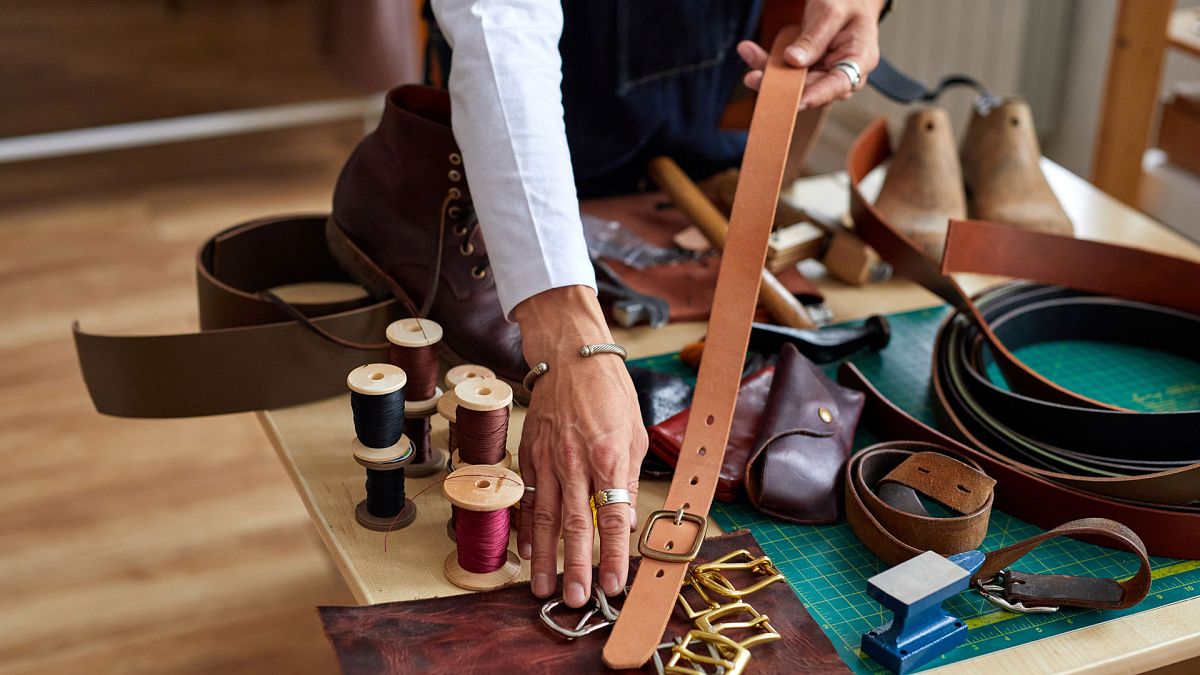Italy’s fashion scene is internationally renowned for its elegance and timeless sophistication. While Milan and Rome often take centre stage, there are lesser-known corners of the country where unique craftsmanship and centuries-old traditions continue to shape the industry.
From the leatherworking ateliers of Tuscany to the silk-weaving workshops in Como, Italy’s regional hubs offer a fascinating narrative of creativity, heritage and innovation.
Tuscany
Tuscany has long been synonymous with craftsmanship and its leatherwork is among the finest in the world. Santa Croce sull’Arno in the province of Pisa is one of the main centres for leather production and processing, with a treasure trove of artisanal workshops supplying the world’s top fashion houses.
In Florence, visitors can explore Scuola del Cuoio, a leather school inside the Santa Croce Franciscan basilica, where masters and apprentices still produce wallets, purses and jackets today. The city’s Museo della Moda e del Costume is also worth a visit, where explorers can marvel at more than 6,000 items of clothing and accessories from the 18th century onwards, from ballgowns to funeral attire. To deepen your knowledge, head to the Textile Museum in Prato, located in the town's former Campolmi textile mill and dedicated to textiles through the ages.
Como
In Como, silk is a heritage artform. In the year 1000, production was widespread across southern Italy. However, it wasn’t until the early 1400s that mulberry cultivation took off and Como’s rise as a silk hub began. By the 18th century, production was at full throttle, with spinning and weaving mills emerging across the region.
The Museo della Seta – or Silk Museum – displays antique twisting, dying and printing machines and demonstrates intricate weaving techniques that have transformed Como into a hub for high-quality textiles, with a legacy that is still very much alive in the contemporary fashion scene. Today, fashion houses globally flock to Como to source fine silk, incorporating it in everything from ready-to-wear collections to haute couture pieces. Elsewhere in Como, the city’s history of textiles and art is celebrated at the Fondazione Antonio Ratti, a non-profit organisation on Lake Como’s western shore that studies textiles from the 3rd to the 20th century.
Naples
Shopping in Italy isn’t just about new clothes, it’s about taking home a piece of history. In Naples, having a suit made to measure is a rite of passage, with quality and craftsmanship guaranteed. While renowned for its contemporary style, Neapolitan tailoring traces its origins to the 14th century with the establishment of the Confraternita dell’arte dei Giubbonari e Cositori, Italy's oldest tailoring guild. Its members crafted ready-to-wear men’s garments, which were sold to royalty and the elite.
Today, fashionistas in Naples make a beeline for Chiaia, one of the chicest districts of the city. Around Piazza dei Martiri there are boutiques and showrooms, which extend to the nearby Via Gaetano Filangieri and Via Mille. Il Museo della Moda Napoli is also a must-visit for anyone interested in the region’s fashion legacy, with exhibitions tracing the evolution of Neapolitan fashion from the 18th century to the present day.
Capri
Just off the coast of Naples lies one of Italy’s most breathtaking islands. Famed for its sun-kissed shores, steep cliffs and azure waters, Capri is also home to the iconic Capri sandal, a symbol of effortless Mediterranean style. Originally handcrafted in the 14th century to navigate rocky shores, the focus was fixed firmly on comfort and functionality, mirroring the needs of the locals.
Over the years, the simple design of the Capri sandal – characterised by a toe post and thin leather straps – has captured the imagination of fashionistas around the world, with everyone from former US first lady Jacquie Kennedy to French starlet Brigitte Bardot slipping into unique designs. Today, the Capri sandal isn’t just a stylish souvenir; it's a personal crafting experience, with shoppers selecting the style, leather type, colours and embellishments at traditional workshops across the island.
Venice
Venice’s legacy as a centre of luxurious textiles and design dates back to the height of the Serenissima Republic. By the 16th century, the city was a global leader in fabric production, with more than 6,000 looms weaving silks, velvets and brocades. Venetian textiles adorned everything from elaborate tapestries and palatial wallpaper to the most fashionable dresses of the day, many of which can still be admired at institutions like the Palazzo Mocenigo Museum.
Burano lace, typified by delicate handwoven textures and floral patterns, remains a quintessential Venetian craft, while Murano glass continues to captivate with its intricate designs and unmatched clarity, used in everything from luxurious jewellery to chandeliers. Perhaps the most iconic craft, Venetian masquerade masks – once worn to conceal identities during the famed Carnival – are now meticulously sculpted by artisans and continue to symbolise the city’s rich artistic and cultural heritage. Don’t miss the Fortuny Museum located in the magnificent 16th century Palazzo Pesaro. Amongst the many exhibits, a dedicated fashion room includes special pieces made by Mariano Fortuny in the early 1900s, inspired by classical Greek art.
Taormina
Taormina is famous for its Sicilian leather products, such as bags, belts and sandals, as well as its vibrant ceramics and handcrafted jewellery. The town's local artisans often incorporate traditional Sicilian designs and materials into modern fashion, creating one-off pieces that blend heritage with innovation. This fusion of old and new reflects Taormina’s rich history, where ancient craftsmanship has been passed down through generations.
Historically, Taormina was a crossroads of various Mediterranean cultures, influencing its artisanal traditions. Today, the town’s chief delight is to wander the boutique-lined thoroughfare of Corso Umberto. The pedestrian-friendly shopping street offers everything from designer labels to traditional crafts, plus plenty of cafes, gelato shops and restaurants to fuel your spree. To explore more of Sicily’s bygone styles, head to the Sicilian Costume Museum in Mirto, around a two-hour drive from Taormina. Here, you’ll find dresses, furnishings and even carriages reflecting Sicilian culture and fashion through the ages.
Discover more of Italy’s fashion heritage destinations at Italia.it.




